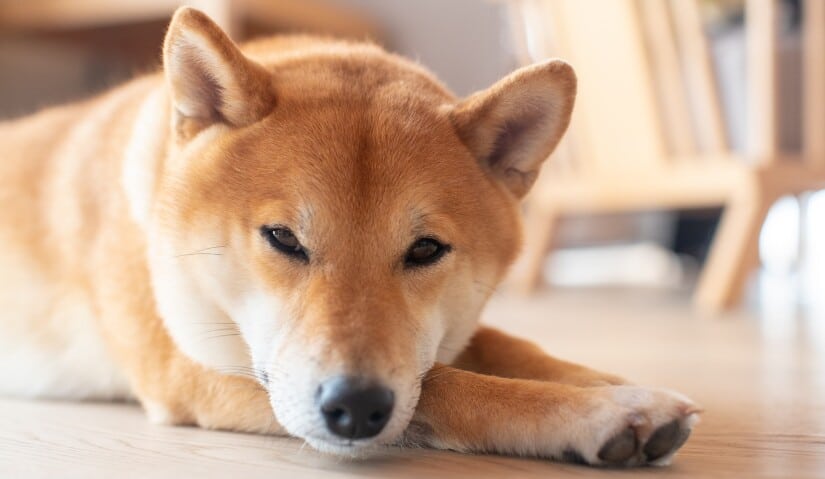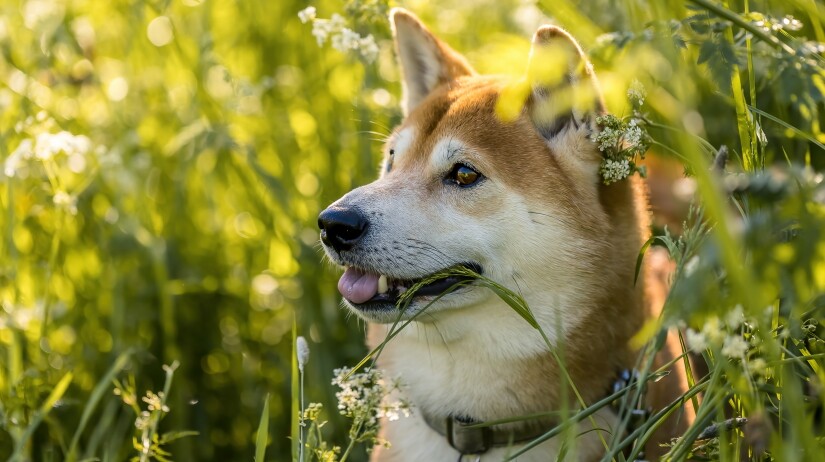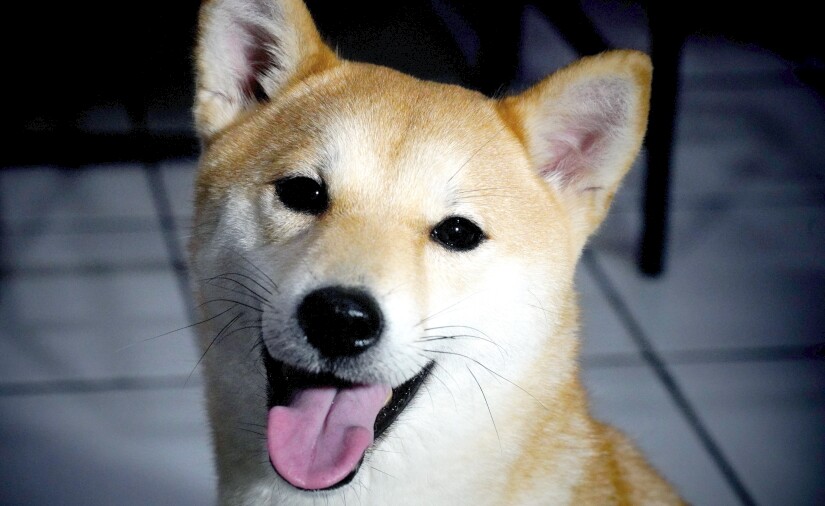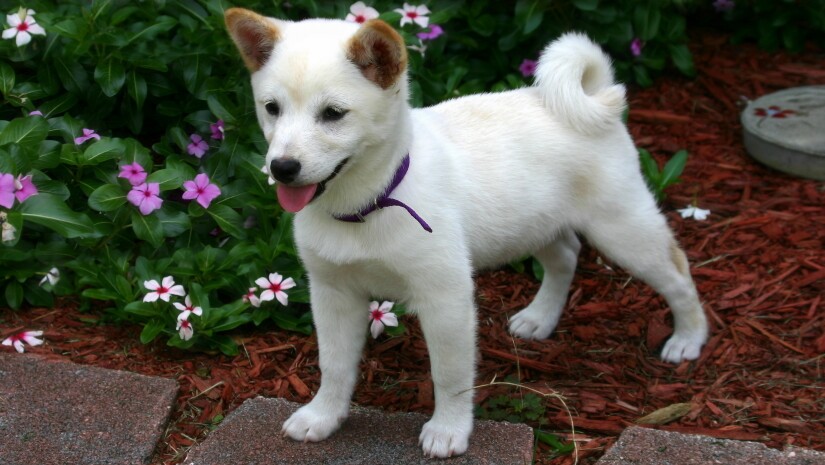How to Make Your Own Agility Course
Undoubtedly the most popular dog sport in the world, agility involves running an obstacle course, jumping, negotiating tight turns and tunnels, and coming out on top in manageable shape. All that and more, as a dog.
It’s time to start your very own living-room agility course. Your Shiba Inu will love you for this. The great thing about it is that all the equipment you need can be crammed up in a small closet, and there’s nothing more adventurous for your dog to do than this.
Of course, it won’t be regulation agility, but it’s a start in a sport that keeps thousands in high spirit. It’s so much fun you’ll want your friend to teach their dogs too and have a competition together. You’re going to have 4 tests or mini-games.
Hurdles
Don’t start jumping over hurdles until your dog is an adult. You can hurt his hips and back if you push him. If he naturally likes to jump then hurdles are totally fine. You can ask your vet if your Shiba Inu can try hurdles. Once you get the ok, here’s what you need.
You’ll need some sort of cut table, mildly sturdy material such as foam board. Cut two strips a few inches wide and about a foot long and make an indentation in the middle. Now cut another strip that will serve as the main board your dog will need to jump over. It should fit nicely with the indentations.
Start with a 1-inch jump; you don’t need to go very high. The main thing you need to know is that they need enough room to approach, or they can’t jump it. Teaching your dog how to jump them is fairly complex and will be discussed in a different article.
The interesting tunnel
Again, getting the item is easy; training your dog to go through it is lengthier. We’ll delve into the latter in a different article. All you need for this obstacle is a kid’s tunnel. You can also use cardboard boxes.
There are two types of agility tunnels you can design for your Shiba Inu: the open and the collapsed tunnel. The open tunnel is just that, a stretch of surface, usually with a bend, with an open end. A collapsed tunnel has a long cloth at the end. To replicate it use the same tunnel and a towel at the end.
A dog-walk
You’re going to need a couple of footstools, tables or ways for him to lift up to the level of the couch. All you need to do is place them at each couch’s end, effectively creating a ramp of sorts consisting of 3 pieces that allow you to break it down for your dog in simple steps.
Teaching your dog to do the couch dog walk is not very hard, and Shiba Inus love running on the couch anyway. You’ll design different commands and you’ll have him running the course in no time.
Weave poles
To practice weave poles you can use toilet plungers. All you need are 4-6 new plungers. If you’re uncomfortable buying 6 from one place try getting one from different stores and add up to 6. Now just set them 50 cm apart each and voila.
Now you need to teach your dog to run the course. It’s not so difficult, even though many people have tried to figure out the best way to make the dog faster and so on. You don’t need the world’s best, you just want to have fun.
How to Jump the Hurdles

You’ve set your foam board, cut it into the designed shapes and you have your hurdle ready. Now it’s time to introduce your Shiba Inu to his new toy. The point of jumping hurdles isn’t to jump as high as possible.
If you’re doing this in the living room, with no backyard access it’s actually very dangerous to try full-height jumps. The fun is negotiating the timing of the jump and the approach. Your dog will have just as much fun jumping 1 inch, as he would, jumping 10.
If you want to do more hurdles in a row you need to space them out at least 8 feet to give him time to recover. On the same safety note, don’t make your dog jump at all until he’s 1 year old. You can provoke serious problems if you do.
Even if your dog likes jumping and does so naturally you still shouldn’t make him jump. The thing is when he does it himself he does it naturally, he wouldn’t jump if he were uncomfortable. But when you ask him to he is trying to please you and will ignore pain. Remember to ask your vet if your dog can jump before you try the hurdles.
Jumping the hurd
You might think he already knows how to jump, but you want him to jump when and where you want him to. To do that you need to teach him a Jump command. Place the hurdle in a spot that blocks any other pathway. Your hallway is probably the best place to try this.
Before you go on, a word of caution. You should always warm-up with your dog when he’s about to do jumps, even if they’re just 1-inch jumps. To do this, simply run around with him for a few minutes.
Walk beside your dog down the hallway, having him facing the hurdle so that he has to jump over it if he wants to go through. Start a fair way away from the jump. As you approach reinforce him by saying he’s a good dog and, as soon as you near the hurdle, say “Jump” or whatever command you want.
You might want to jump the jump yourself so he sees it’s ok and a lot of fun too. When he jumps, praise him with hugs, warm words and the all-time favorite: “good boy”. From here on it’s just a question of repeating the exercise while you gradually move away from him and letting your Shiba Inu do it alone.
What to do if your dog doesn’t jump
There are a number of possible reasons. He might be afraid he’s going to get hurt, or that you might step on him. If you think this is the case give him more room. Design a wider foam-board if you have to. Also, make sure you’re coming at it in a straight line.
If he’s still reluctant to try (very hard to believe as it is) you can try a different approach. Have a friend hold him on one side of the hurdle while you go to the other.
Grab a treat and call him. Once he gathers the courage and momentum to jump say the Jump command so he starts associating the word with the real deal. Finally, he might be reluctant to jump if the hurdle is too high, that’s why I advised you to start with a 1-inch jump.
Once you’re done with your practice make sure you put the hurdles away. For safety’s sake, you should never let your dog jump over obstacles unsupervised. Don’t be down if your Shiba Inu doesn’t like jumping hurdles, there’s plenty of other things for you to do.
The Open Tunnel

In agility competitions, there are two types of tunnels, open and collapsed. I’ve talked a bit about what’s the difference between them and how you can make your own using a simple kid’s tunnel and a towel. In actual competitions, the tunnels are large, heavy fixtures with a bend in the middle. Obviously, that’s not going to fit in your living room, so we’ll scale down.
As I said, all you need is a kid’s tunnel or perhaps some cardboard boxes. Both ideas usually allow you to add more tunnels to the end and that’s all you really need. If you’re practicing for a competition it’s a good way to give your Shiba Inu some experience beforehand.
So the problem boils down to teaching your dog to go through it. Shibas are generally very active and curious and will probably show interest in your new contraption the instant you lay it down on the floor, not even unfolded. Let’s go through each type of tunnel and teach the dog it’s a lot of fun.
How to do the Open Tunnel
First of all I advise you to pick different words for the types of tunnels because, since they have a bend, the dog won’t see the end of the tunnel from the beginning. Having a different word lets him know what to expect. If he doesn’t know what to expect he’ll start to become fearful of it and won’t come out to play anymore.
Start with the tunnel almost completely folded, kind of like an accordion. You want him to see the end of the tunnel and you want the fabric he steps on to be as smooth as possible.
Now have your dog stay on one side of the tunnel, you go on the other side and show him some yummy treats (which you hold inside the tunnel) and call him to you. As he enters the tunnel praise him and reward him with the treat. Practice this part, each time going a little farther in the tunnel.
Once he’s got that down you can add the command word “Tunnel” or whatever you want. Hold the treat outside the other end of the folded tunnel, call him with the command word and as he darts to it say “good Tunnel” or what word you chose. Now it’s a simple matter of slowly extending the tunnel until it’s at full length.
If your dog won’t go through the Open Tunnel
He may not like it right away, here’s what might be causing it. The folded surface might seem too freaky and scary to go on. You can either unfold it a little bit and try again, or you can add a towel or something on the flat so it looks a little better.
Another possibility is that you’re going too fast. If you think that’s the case try first feeding him a treat at the beginning of the tunnel. Just enough inside so he has to put his head in there. Then go a little farther and from there on it’s smooth sailing.
He might just plainly be afraid of the tunnel. So be clever about it. Show him it’s no big deal. Place a few treats inside the tunnel and go watch some TV. Watch as your Shiba Inu curiously starts to interact with the contraption, drawn upon it by the unmistakable scent of treaties.
The Open Tunnel is a great obstacle to run and a lot of fun for you and your Shiba. Expect to play around with it for years, even if it’s just made out of foldable boxes.
The Collapsed Tunnel

We’ve talked about teaching your Shiba Inu the Open Tunnel and how fun it is. The other type of tunnel found in agility courses is the collapsed tunnel. This tunnel is usually shorter and has a long cloth dangling over one end. Of course, you can always use a towel.
Before you attempt the collapsed tunnel you should master the open tunnel. It’s important to do so because this one is a lot scarier and incorporates something most dogs detest, things touching their head.
It will probably be more frustrating than the open tunnel, will take more time and you won’t enjoy it as much, as quickly. But if you first teach him to run the open tunnel on command then this one is going to be a piece of cake.
How to run the Collapsed Tunnel
I’m going to assume you and your merry Shiba Inu have already mastered the Open Tunnel. You’re going to build upon that, so if it isn’t reliable yet you’ll have a hard time with this one. So, if you think he’s not ready go back to the open tunnel and practice more.
Start the practice by folding the towel completely at the top of the tunnel then giving him his open tunnel command. Reward when he comes through on the other side and repeat.
Only this time you will lower the towel just a little bit. Enough so he can see it, but not so far to touch him. Now say the tunnel command and add the “collapse” or whichever word you chose for the collapsed tunnel.
Change between the towel completely up and seeable but not touchable. When he can see the fabric, add the collapse word; when he can’t, just say the open tunnel word. Shiba Inus love agility tunnels and will quickly understand the difference.
Now gradually lower the towel one or two inches until it will eventually cover the bottom of the opening. Here, even if the fabric is all the way down you can try to hold it up so he sees you’re there to have fun with him, not to trap him inside.
What to do if your dog doesn’t want to run through the Collapsed Tunnel
Whenever this happens, whatever you’re teaching your dog, and he doesn’t comply anymore, slow it down. Slow it way down. You’ve most likely seen some good progress and went a little too fast. So start again, you’ll quickly figure out where he’s stuck.
Go back to ground one. Start doing the open tunnel a little bit; see if he gets that right. If that’s all good start adding a little fabric again. Then proceed from there.
Another reason might be he just doesn’t like things on his head. So get him used to that if you think that’s the case. He might have eye problems that make him shy away from things on his face. Take him to the vet and check up on anything.
Chances are he just isn’t used to having things cover his face. Though Shiba Inus love playing however they can they just need to practice this. Help him by touching his face plenty.
The Collapsed tunnel is just another cool environment for your Shiba Inu that just happens to have something that touches his face. It’s no big deal. After he knows those you can start linking them together with the hurdles and creating your very own, first agility course.
Complete Your Agility Course With Plunger Weave Poles

Completing your agility course will give you a big bonus in variety in terms of what you can do with your Shiba Inu. But first, let’s get your dog ready for the final obstacle.
For the final agility obstacle, the Weave Poles, you’re using toilet plungers, new toilet plungers to be exact, spread 20 inches apart from each other so he has enough space. This obstacle is quite difficult and there is a lot of information on the best way to teach your dog to run the weave poles.
But let’s face it; you’re never going to reach competitive speeds in the living room. The idea is for your Shiba Inu to slalom through without touching them, as fast as possible.
You’re probably going to use the hallway since it has the most space. In competitive agility, the dogs always start with the first pole on their left, so just go along with the idea.
Using plungers is a great idea that works on different levels. Because they’re not that tall you can just lure him through with a treat without ever changing hands or getting into uncomfortable positions.
Use a Weave command, which, again, can be any word you want. Use it for one plunger at a time, each time saying the word and rewarding him for going through it. The inherent repetitive nature of the obstacle makes it pretty easy to teach at a basic level.
Putting it all together, running a Complete Living Room Agility Course
He knows them intimately, he’s comfortable with each of them, and he’s ready for the whole thing. You’ve got your own agility course. You’ve got the hurdles spread around for those delightful jumps.
You’ve got the couch-walk ready to be invaded by fur. Your tunnels are set, turns and everything. And your weave pole plungers are ready for some weaving. Last but not least, the Shiba Inu is locked and loaded. On your marks, get set, Start!
Once you’ve got a taste of how much fun running your own agility course is you’ll definitely want to show your friends. And if they have dogs too you can invite them to run the course with their dogs too.
